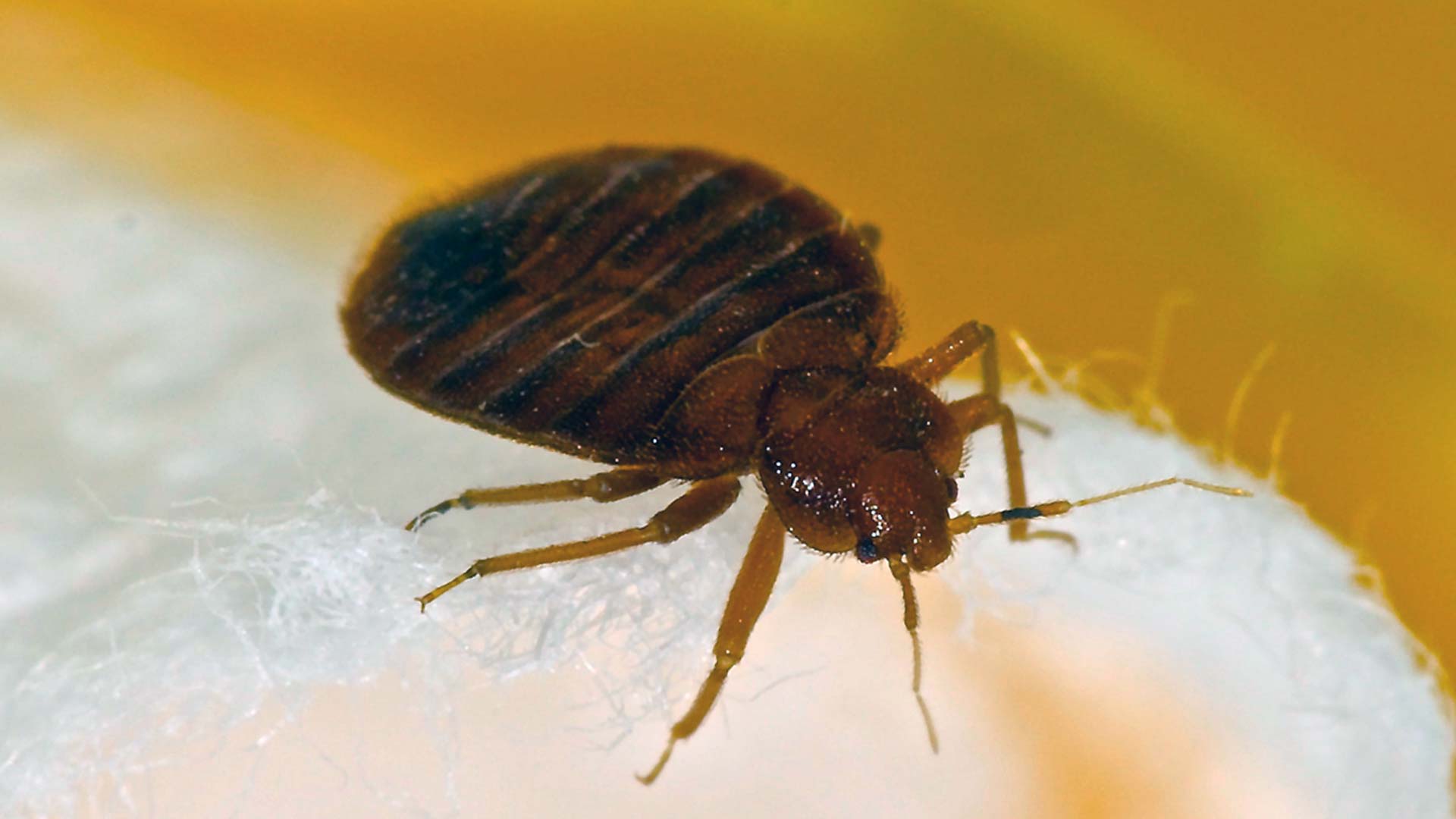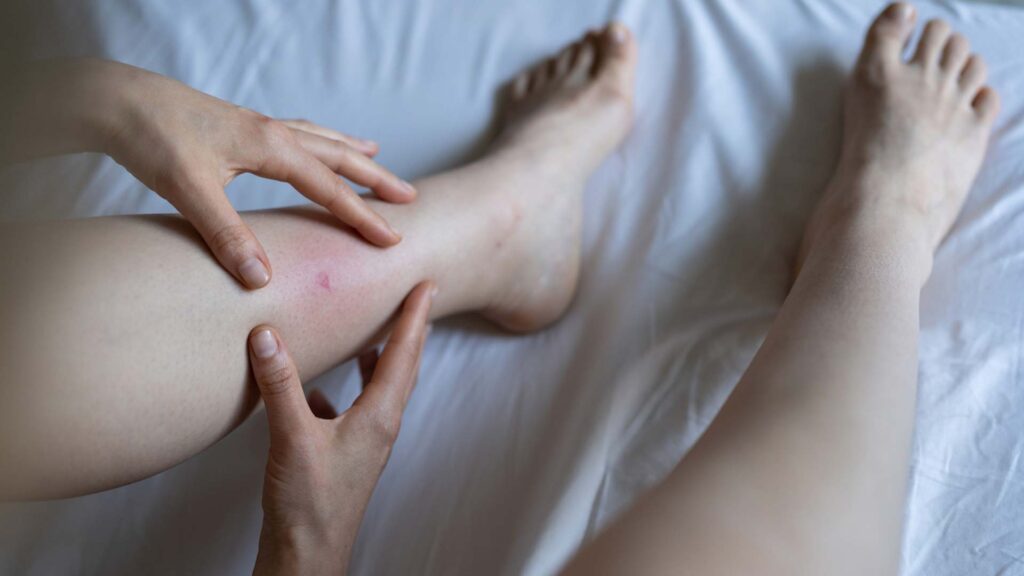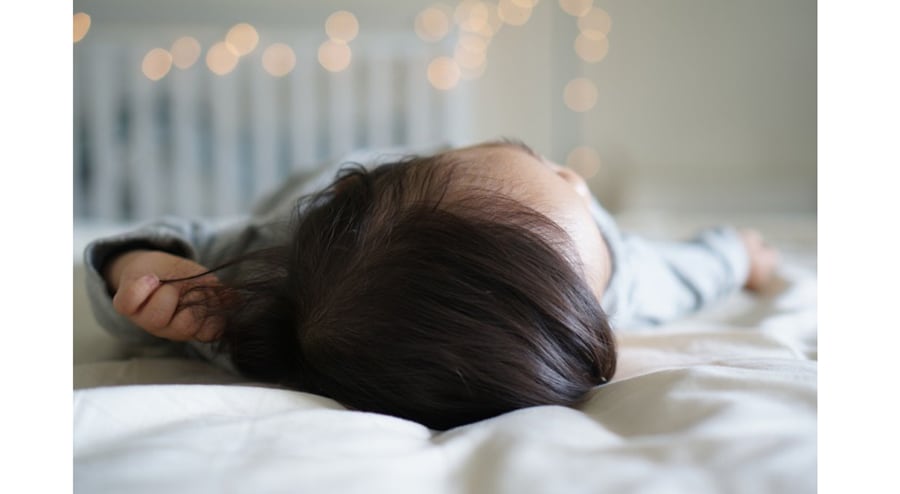How to Find Bed Bugs in a Hotel Room
To find bed bugs in a hotel room, start by inspecting the bed, including sheets, mattress seams, and headboard, for signs like tiny blood spots or live insects. Check surrounding areas such as nightstands, upholstered furniture, and even picture frames, as bed bugs can hide in small crevices. Store luggage on a rack or in the bathroom to avoid contact with infested areas. If you find any evidence of bed bugs, inform hotel management immediately and request a different room. Regularly washing and heat-drying travel clothing can also help prevent bringing bed bugs home.

For many, a hotel room symbolizes a retreat from the hustle and bustle of daily life, a temporary haven offering rest and relaxation. However, beneath the crisp linens and well-appointed amenities, a hidden menace may lurk: bed bugs. These minuscule pests, often undetected by the naked eye, are not just a nuisance but a burgeoning public health concern.
The resurgence of bed bugs in hotel rooms across the globe is a troubling trend, challenging the notion of safe and hygienic accommodations. These creatures, no larger than an apple seed, are adept at stowing away in luggage, clothing, and other personal belongings, making them unwelcome hitchhikers on your journey home. Their presence is not a matter of hygiene or cleanliness of the hotel; even the most luxurious establishments are not immune to their stealthy invasion.
Bed bugs, known scientifically as Cimex lectularius, have coexisted with humans for millennia. Historically, they were common bedfellows in human dwellings, but their numbers dwindled in the mid-20th century, thanks to advances in pest control. However, this victory was short-lived. In recent decades, these pests have mounted a comeback, largely attributed to increased global travel and urban density, coupled with their growing resistance to conventional insecticides.
The concern is not just their unnerving presence; bed bugs are blood-feeding insects. They emerge in the dead of night, feeding on unsuspecting guests as they sleep, leaving behind itchy, red welts. While they are not known to transmit diseases, their bites can cause allergic reactions in some individuals, leading to discomfort and distress.
The psychological impact of encountering bed bugs is profound. The mere thought of these pests can evoke a sense of fear and paranoia, particularly for frequent travelers. Stories of bed bug encounters circulate in media reports and travel forums, adding to the growing apprehension among the public. This fear is compounded by the difficulty in eradicating these pests once they establish a foothold, whether in a hotel room or a private residence.
As we delve deeper into the world of these nocturnal pests, it becomes clear that the threat they pose extends beyond mere physical discomfort. The silent invasion of bed bugs in hotel rooms is a complex issue, intertwining public health, psychology, and the challenges of modern pest management. It’s a reminder that in our interconnected world, even the smallest creatures can have a significant impact on our well-being and peace of mind.
A Growing Concern: The Escalating Battle Against Bed Bugs in Hotels
The issue of bed bugs in hotel rooms is not just a minor inconvenience; it represents a growing concern in the hospitality industry and for travelers worldwide. As global travel resumes, particularly in the post-pandemic era, the likelihood of bed bug infestations and their spread increases significantly. This resurgence poses challenges not only to hotel management but also to public health and individual well-being.
The ease of international travel has inadvertently facilitated the spread of bed bugs. These pests, adept hitchhikers, can easily travel across continents in luggage, clothing, and other personal belongings. The increase in short-term rentals and shared accommodations further complicates the issue, as these environments are less regulated than traditional hotels.
Detecting bed bugs is a significant challenge due to their small size and nocturnal nature. They can remain hidden for long periods, emerging only to feed. This elusive behavior makes early detection difficult, often leading to established infestations before they are noticed. Eradicating bed bugs is equally challenging. They have developed resistance to many conventional pesticides, forcing pest control professionals to use more innovative and comprehensive approaches.
For the hospitality industry, bed bug infestations can have severe economic repercussions. The cost of professional extermination, potential legal liabilities, and room closures all contribute to financial losses. Moreover, the reputational damage can be even more devastating. In the age of online reviews and social media, a single report of bed bugs can deter potential guests and tarnish a hotel’s image.
While bed bugs are not known to transmit diseases, their bites can cause allergic reactions, ranging from mild to severe. The psychological impact is also profound. The stress and anxiety associated with bed bug infestations can lead to sleep disturbances and diminished quality of life. For individuals with existing mental health conditions, these effects can be exacerbated.
Raising awareness about bed bugs and educating travelers and hotel staff is crucial in combating this issue. Hotels must implement regular inspections and train their staff to recognize the signs of an infestation. Travelers should be informed about preventive measures and the steps to take if they encounter bed bugs.
As the battle against bed bugs continues, research into more effective detection and eradication methods is essential. Collaboration between the hospitality industry, pest control professionals, and public health authorities is key to developing strategies to manage and mitigate the impact of these pests.
The growing concern over bed bugs in hotel rooms is a multifaceted issue that requires a concerted effort from various stakeholders. Through increased vigilance, education, and innovation, it is possible to reduce the prevalence of bed bugs and protect the well-being of travelers and the reputation of the hospitality industry.
The Hotel Room Check
When it comes to ensuring a bed bug-free stay in a hotel, the importance of a thorough room check cannot be overstated. This proactive measure is a critical step in preventing these pests from hitching a ride back to your home. Here’s an expanded guide on how to conduct an effective hotel room check:
Initial Assessment: Upon entering your hotel room, resist the urge to place your luggage on the bed immediately. Instead, use a luggage rack, often found in the closet or bathroom, as a safe staging area. If a luggage rack is not available, the bathroom, typically with fewer hiding spots for bed bugs, can serve as a temporary holding area.
Visual Inspection of the Bed: Start with the bed, as it’s the most common hiding place for bed bugs. Pull back the linens and inspect the edges of the mattress and box spring. Look for small, reddish-brown bugs, tiny white eggs, or dark spots that could be bug excrement. Pay special attention to seams, labels, and any rips in the fabric where bugs might hide.
Headboard and Bed Frame: Detach the headboard if possible, as bed bugs often reside in the crevices. Examine the bed frame, especially if it’s wooden, as cracks and crevices in wood are ideal hiding spots for these pests.
Beyond the Bed: Extend your inspection to furniture near the bed, such as nightstands and chairs. Check drawers, seams of upholstered furniture, and even behind picture frames and mirrors. Bed bugs can reside within 15 feet of a sleeping area, so it’s crucial to inspect a wide radius around the bed.
Curtains and Carpets: Examine the edges of curtains and any seams or tears in carpets. While less common, bed bugs can also reside in these areas, especially if they’re close to the bed.
Electrical Outlets and Appliances: Inspect around electrical outlets, telephones, clocks, and even in remote controls. Bed bugs are attracted to the warmth these devices emit and can often be found hiding in these unexpected spots.
Closet Inspection: Don’t overlook the closet. Check the luggage rack, if you’re using one, and inspect any extra blankets or pillows stored in the closet.
Immediate Action if Bed Bugs are Found: If you find any signs of bed bugs, immediately contact the hotel management. Request a room change, preferably to a room that is not adjacent to or directly above/below the suspected infestation. Remember, it’s not just about finding another room; it’s about ensuring your safety.
Post-Check Precautions: Even if your inspection doesn’t reveal bed bugs, it’s wise to take precautions. Avoid storing clothing in dressers and keep your suitcase zipped when not in use. Consider using plastic bags to encase your luggage or belongings as an extra layer of protection.
By conducting a detailed hotel room check, travelers can significantly reduce the risk of an unwelcome encounter with bed bugs. This process, while seemingly meticulous, is a small investment of time that can prevent a significant and stressful infestation in your home.
Comprehensive Hotel Room Bed Bug Inspection Checklist
| Inspection Area | What to Look For | Tips and Precautions |
| Luggage Storage | Small, dark stains, tiny eggshells or shed skins, and live bugs in seams and crevices | Place luggage on a rack or in the bathroom. Avoid placing it on the bed or floor. |
| Bed Linens | Blood spots, tiny dark excrement spots, live bugs | Pull back sheets and inspect all corners and edges. |
| Mattress and Box Spring | Small bugs, white eggs, excrement spots | Focus on seams, labels, and any tears in the fabric. |
| Headboard and Bed Frame | Bugs in crevices, behind the headboard | Detach the headboard if possible; inspect wooden frames closely. |
| Surrounding Furniture | Bugs in seams, drawers, under furniture | Check nightstands, chairs, and sofas near the bed. |
| Curtains and Carpets | Bugs in seams, edges, tears | Inspect around and behind curtains and carpet edges. |
| Electrical Outlets and Appliances | Bugs in and around outlets, warm devices | Check behind phones, clocks, and in remote controls. |
| Closet Area | Bugs on luggage racks, in stored linens | Inspect any extra bedding and the luggage rack. |
The Resurgence of Bed Bugs: A Global Concern
The resurgence of bed bugs in recent decades has become a significant public health concern worldwide. After being nearly eradicated in the mid-20th century, largely due to the widespread use of DDT and other potent insecticides, these pests have rebounded with a vengeance. This resurgence is attributed to several factors, including increased global travel and urbanization, as well as the bed bugs’ developed resistance to many traditional pesticides.
International travel plays a pivotal role in the spread of bed bugs. These insects are adept hitchhikers, easily moving from one location to another in travelers’ luggage, clothing, and personal belongings. The rise in budget travel and the increase in the frequency of international trips have facilitated their spread across continents. Urbanization has also contributed to their proliferation. In densely populated cities, bed bugs find ample opportunities to move between closely situated living spaces, infesting large apartment complexes and hotels with alarming speed.
Moreover, the challenge in controlling these pests is compounded by their growing resistance to common insecticides. Over the years, bed bugs have developed strong defenses against chemicals that were once effective. This resistance has led to a need for more innovative and integrated pest management strategies, combining chemical and non-chemical approaches. The adaptability and resilience of bed bugs, coupled with these factors, have made them a persistent and challenging foe in the quest for safe and healthy living environments
Prevention and Control
Preventing a bed bug infestation begins with awareness and vigilance, especially for frequent travelers. Before checking into a hotel room, it’s advisable to read reviews and check for any mentions of pest problems. Upon arrival, a thorough inspection of the room, as previously described, is crucial. Additionally, travelers should avoid placing their luggage on the bed or floor. Using metal luggage racks – after inspecting them – is a safer option, as bed bugs have difficulty climbing on smooth surfaces.
At home, regular inspection of sleeping areas can preempt an infestation. This includes checking bed linens, mattress seams, and box springs for signs of bed bugs. Using protective covers on mattresses and box springs can also help detect and prevent infestations. Regular vacuuming of bedrooms and living areas is effective, but the vacuum bag should be immediately disposed of outside the home after use. For those living in multi-unit buildings, cooperation with neighbors and property management is essential, as bed bugs can easily spread through shared walls and floors.
In cases where an infestation is suspected or identified, prompt action is necessary. While there are over-the-counter treatments available, they often prove ineffective against bed bugs due to their resistance to many common insecticides. Professional pest control services are usually the most reliable solution. These experts can provide a more thorough treatment, often using a combination of chemical and non-chemical methods, such as heat treatment, which has proven effective in eradicating bed bugs at all life stages. Homeowners should also be wary of home remedies or unproven methods, which can not only be ineffective but also potentially hazardous.
The Inspection Guide
Step 1: Luggage Safety
- Keep luggage on a rack away from the bed and walls. Avoid placing it on the floor or bed.
Step 2: Bed Check
- Carefully inspect the mattress, especially seams and tags, for signs of bed bugs. Use a flashlight for better visibility.
Step 3: Furniture and Fixtures
- Check nearby furniture, including nightstands and chairs. Inspect behind headboards and in any crevices.
Step 4: Immediate Action
- If you find any signs of bed bugs, contact hotel management immediately and request a room change or consider finding another hotel.
The Psychological Impact
The psychological toll of a bed bug infestation is profound and often overlooked. These pests, while not carriers of disease, bring a unique form of psychological distress. Homeowners and hotel guests who have experienced bed bug infestations report a range of emotional responses, from mild anxiety to severe psychological distress. The incessant worry about being bitten during sleep can lead to sleep disturbances and insomnia. This lack of rest not only affects one’s mental health but can also have cascading effects on physical well-being, including impaired immune function and increased stress levels.
Moreover, the stigma associated with bed bugs exacerbates the psychological impact. There is a common misconception that bed bug infestations are linked to poor hygiene or low socioeconomic status, which is not the case. These pests are indiscriminate in their choice of environment, thriving in both clean and cluttered spaces. However, this stigma can lead to feelings of shame and embarrassment, causing individuals to delay seeking help or discussing the problem with others. This isolation can intensify feelings of anxiety and depression, creating a cycle of distress that extends well beyond the physical presence of the bugs.
In addressing bed bug infestations, it’s crucial to consider not only the eradication of the pests but also the psychological well-being of those affected. Providing support and education about bed bugs can help alleviate the stigma and the associated mental health burdens. Understanding that these infestations are a common, albeit unfortunate, part of urban and travel experiences can help in normalizing the issue and encouraging open dialogue and timely intervention.
The silent threat of bed bugs in hotel rooms underscores a critical aspect of modern travel: the need for heightened vigilance. These tiny pests, adept at stowing away in luggage and personal belongings, can easily transition from being a temporary nuisance in a hotel room to a persistent problem in one’s home. The resurgence of bed bugs in recent years, fueled by factors such as increased international travel and pesticide resistance, has transformed them into a global concern, transcending geographical and socio-economic boundaries.
The battle against bed bugs is not just about individual vigilance; it reflects a larger narrative about public health awareness and the importance of proactive measures in pest control. Travelers equipped with knowledge and awareness can play a pivotal role in curbing the spread of these pests. Simple actions, such as inspecting hotel rooms and managing luggage wisely, are not just personal safety measures but also contribute to the broader effort to control bed bug infestations.
Moreover, the issue of bed bugs extends beyond the physical realm, impacting mental health and social dynamics. The psychological toll of dealing with an infestation, often marked by anxiety, sleep disturbances, and a sense of violation, highlights the need for compassionate understanding and support for affected individuals. It also calls for a de-stigmatization of the issue, encouraging open dialogue and education to dispel myths and misconceptions about bed bugs.
As the world continues to navigate the complexities of post-pandemic travel, the concern over bed bugs in hotels becomes increasingly pertinent. This situation demands a concerted effort from hotel management, pest control professionals, and travelers to ensure that these pests are kept at bay. Hotels must prioritize rigorous pest control protocols and swift responses to infestations, while travelers should remain informed and cautious.
In essence, the challenge posed by bed bugs in hotel rooms is a reminder of our interconnectedness and the collective responsibility we share in ensuring safe and healthy environments. By staying informed, vigilant, and proactive, we can protect not only our homes but also contribute to a larger effort in public health and safety. As we continue to travel and explore, let us do so with a renewed awareness of the small yet significant steps we can take to safeguard our well-being and that of others in the face of unseen invaders
Frequently Asked Questions About How to Find Bed Bugs in a Hotel Room
What are the first signs of bed bugs in a hotel room?
The first signs include small blood stains on sheets, tiny dark spots (bed bug feces), and live bed bugs, which are small, reddish-brown insects about the size of an apple seed. You might also notice a sweet, musty odor.
Where should I look for bed bugs in a hotel room?
Check the mattress, especially seams and tags, bed frames, headboards, and box springs. Also inspect upholstered furniture, behind picture frames, and around electrical outlets. Bed bugs can hide in very small spaces.
What should I do if I find bed bugs in my hotel room?
Immediately inform the hotel management and request a different room, preferably far from the infested one. Avoid bringing your luggage into the room until you have confirmed it is free of bed bugs.
Can bed bugs travel home with me from a hotel?
Yes, bed bugs can hitch a ride on luggage, clothing, and personal items. To prevent this, keep your luggage on a rack away from the bed and walls, and inspect your belongings before leaving.
How can I prevent bed bugs in a hotel from infesting my home?
Upon returning home, wash all travel clothing in hot water and dry on high heat. Vacuum your suitcase and store it away from bedrooms. Regularly inspect your sleeping areas at home for signs of bed bugs.
Are bed bugs a sign of a dirty hotel?
No, bed bugs are not necessarily a sign of uncleanliness. They can be found in both budget motels and luxury hotels. They are attracted to warmth, blood, and carbon dioxide, not dirt.
Do bed bugs transmit diseases?
According to the CDC and EPA, bed bugs are not known to spread diseases. However, their bites can cause itching and allergic reactions in some people.
How can I avoid bed bug bites while sleeping in a hotel?
Conduct a thorough inspection of the bed before use. If you suspect bed bugs, request a different room or consider changing hotels. Keep your luggage and clothing away from the bed.
What are the health impacts of bed bugs?
Bed bug bites can lead to itching, red welts, and allergic reactions. The presence of bed bugs can also cause anxiety, stress, and sleep disturbances.
Can I get rid of bed bugs in a hotel room myself?
It’s difficult to eliminate bed bugs on your own in a hotel setting. The best course of action is to alert hotel management and let them handle the situation with professional pest control services.




